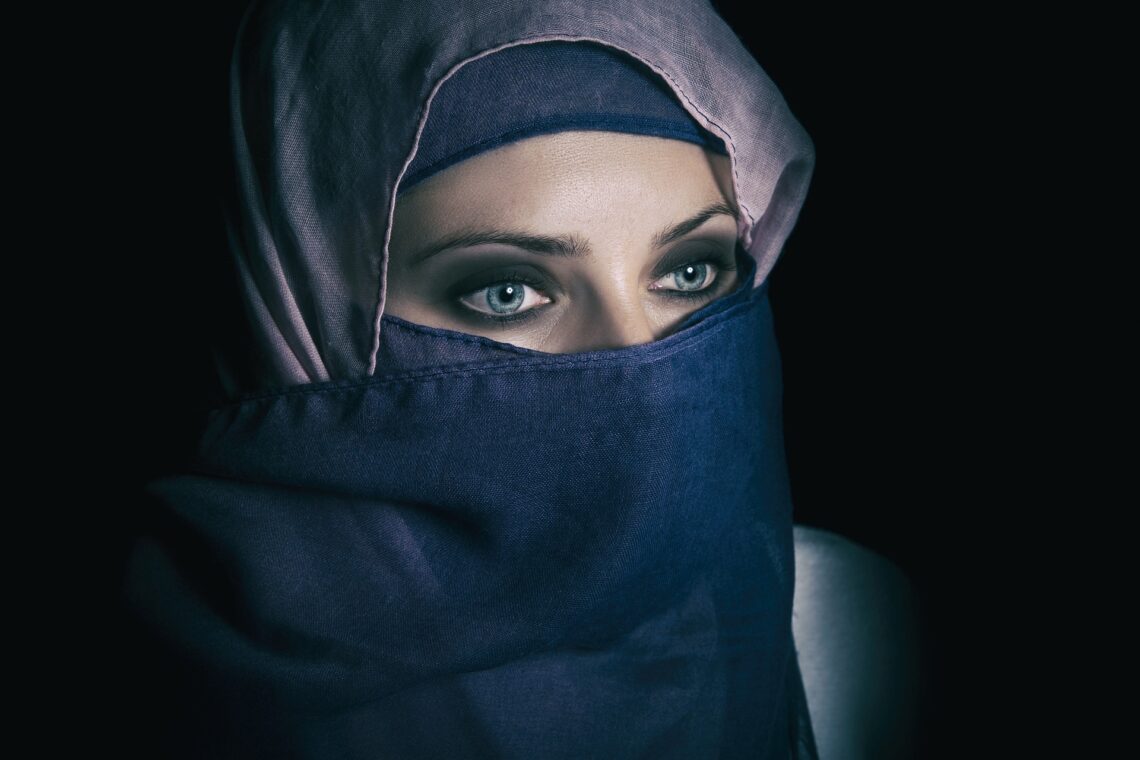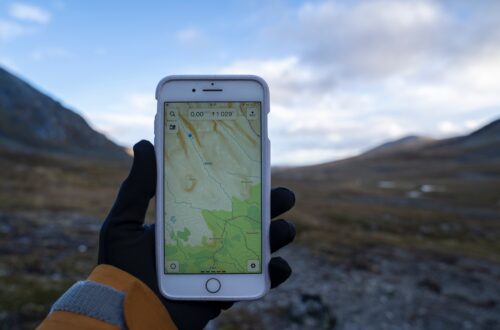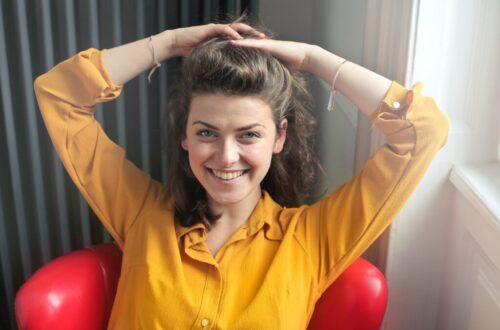
The Iran protest: what it means to Muslim-Americans
If you’ve viewed any social media over the last few months, you will see countless posts on women protesting in Iran by tearing off their Hijabs.
The protests began on September 16th, after Mahsa Amini, a 22-year-old Iranian woman, died while in the custody of the morality police for violating the strict rule that requires to cover their hair with a hijab or a headscarf.
It was reported that her head sustained blows from a baton, while the police simply said she suffered a heart attack. The protests started small after Mahsa’s funeral but soon swelled all over the country, with women taking off their hijabs in solidarity to gain more freedom from Iran’s male-dominated society.
But ripping off hijabs isn’t the only way that these women are protesting.
They’ve been setting head coverings ablaze in public with chants for freedom and publicly protesting against the wearing of these garments. Younger men mostly, as well as teenage boys, have shown support and backed these women in a move of solidarity aimed at a future where all are equal.
Authorities have been less supportive, as they have used force to suppress this uprising, and even accused the United States and Israel, Iran’s longtime enemies, of orchestrating the riots in order to push Western ideals into their country.
Unfortunately, Mahsa Amini hasn’t been the only causality in the protests for freedom. A Norway-based non-profit human rights organization, Iran Human Rights, reported that at least 234 people have died to date.
This isn’t the first time that Iran has faced protests from its people.
In 2009, millions took to the streets in the Iranian Green Movement, sparked by a corrupt Presidential election. In both 2017 and 2019, working-class people took to the streets in protest due to economic hardships that challenged their everyday life.
But this protest is different. For the first time in Iranian history, people from all walks of life; rich and poor, old and young, men and women, are banning together in order to make sure that Iran is an equal place for women moving forward.
This protest has been very personal to me. I work at the YMCA as a membership coordinator, and a lot of my coworkers are Muslim women who wear hijabs.
These women have immigrated to the US for a better life, not only for themselves, but for their families as well.
In my 6 months of working there, I have learned so much from these strong, modern Muslim women. They’re some of the nicest people I have ever had the pleasure to meet, always asking me about my day, bringing me food, and sitting down and having some pleasant conversations about everything and anything.
When I heard about these protests, I wondered what the traditional American Muslim woman thought of them, and whether or not they agreed about what women were doing in Iran.
I approached a personal friend who works with me and also happens to be Muslim and asked her if I could ask her some questions about this protest. She was more than happy to, but due to her children’s hectic schedules, the best option, for her and I, was an email correspondence.
I typed up nine questions that I believed would give my readers an insight into what the traditional Muslim American women thought about theses protests and why Muslim women wear the hijab in the first place.
To keep her identity anonymous, I will refer to her as RK. She wanted to remain anonymous, because any words that go against the Hijab could be interpreted by some as going against their prophet Mohamed, which is a huge sin in their religion. The only way I could get this interview was to promise to keep her identity a secret.
Here are my questions and her answers.
1) What is the purpose of the Hijab?
“Hijab symbolizes that she has been sanctified to one man only and is off-limit to all others. Hijab contributes to the stability and preservation of marriage and family by eliminating the chances of extramarital affairs. Finally, it compels men to focus on the real personality of the woman and de-emphasizes her physical beauty. It puts the woman in control of strangers’ reaction to her.”
In the Quran, married couples are referred to as “Zawj” which means “pair.” A wife is a “zawja” and a husband is a “zawj.”
2) What is the history of the Hijab?
It started when a lot of people visited Prophet Mohamad and he was establishing the Islamic community, so he wanted to give privacy to his family and asked to put curtains to separate strangers who visit him at home not bother his family. Then Quran asked women to get covered with Hijab in Surah Al Ahzab verse 59, which is protection for women from all these strangers.
3) Can you explain what the Hijab means to you?
Protection from unrelated male, and the sick minded who think of women only as physical figure and do not see her personality and try to mess with her. Our Islam treat us as Jewels, if you have an expensive Jewel you will put it in box and in Safe to protect it. And that why our Islam ask us to get cover. And its protection for community so male will focus on building the community and work and there will not be any illicit relationships.
4) Why do you wear your Hijab daily?
Because is what GOD and my Islam asked me to do for my safety and I will be rewarded by Haven. As we are as Muslims believe that this life is big test for us and the afterlife is our eternity life and who believe in GOD and follow his rules will be rewarded with Haven.
5) When will your daughter begin wearing the Hijab? What is this process in the Muslim faith for this?
Every female has to start wearing Hijab when she reaches puberty. As she will be asked to start fasting and praying and all religions acts.
6) America has become a nation of fewer social norms. Is it difficult for a family of the Muslim faith, such as yours, to navigate the societal divide in America these days? Does the Muslim faith community, as a whole, help Muslim-American families offset the social issues dividing America?
Yes there is a lot of support from our faith and our community centers support families and specially youth who face some bullying for their faith.
What the conservative American do not know that we believe in Jesses and love him as prophet and there is a chapter in Quran talking about Jesses and his Mother Mary. And our prophet Muhamad asked us to respect and love our Christian neighbors and friends.
7) Do you think western media has given fair coverage to the Muslim women who appreciate the Hijab?
No, there should be more explanation why we as Muslim women have to wear it. And explain that it not only women also men asked to wear modest clothes in public.
8) Were you born in the states? Do you have family in Iran? Do you ever get to visit your family?
No, I am born in United Arab Emirates, Dubai. No I do not have family in Iran. Yes I go to Jordan every two years.
9) I mentioned the divide we are experiencing in America. I’m of the opinion that many people no longer speak to one another as we once did. We no longer hear each other as we once did. Lipscomb is a predominantly Christian university with a very low Muslim population. So, what does your faith mean to you? Can you help us see the Muslim faith through your eyes?
Islam is so simple it means to believe in one GOD who created everything his is the most mercy and creator of everything.
Muslim are monotheistic and worship one all-knowing GOD, we live a life of complete submission to GOD, we believe that nothing can happen without GOD permission. And that we have free will to choose things and we will be rewarded in Life and after life if we are good Human to everything around us. we have five pillars of Islam and every Muslim have to believe and implement them in their live to be a Muslim.
- Shahada, to declare one faith in GOD and belief in Muhamad as Prophet.
- Salat: to pray five times a day.
- Zakat: to give to those in need.
- Sawam: fasting the month of Ramadan
- Hajj: to make pilgrimage to Mecca at least once during a person’s lifetime if the
person is able.
As you can see, the Hijab is an important element of the Muslim faith. Although I was able to have a very enlightening interview, I wanted to learn more about this faith and gain a deeper understanding by hearing from another source.
I reached out to both the Islamic Center of Nashville and the Islamic Center of Tennessee, but due to scheduling conflicts, we could not sit down with both centers to conduct additional interviews.
What I hoped to discover is why the Hijab is such a crucial part of the Muslim faith and why these protests appear to be different than prior ones.
I began my own research around the importance of the Hijab and its significance to the Muslim faith.
There was a very informative article from Arab News, a leading source in Muslim traditions, that answered this question.
The article was published in 2012 and states that the “Hijab represents a woman’s submission to her creator and her connection with the faith.” And further states that the “Hijab is a test for the Muslim woman.”
It appears, then, to be a test and a connection to their creator, such as a cross necklace is to Christians or a yarmulke is for the Jewish faith. All three symbols represent a connection to their creator and faith in action.
But the Hijab is different in one fascinating way.
In this same article, it states that “a woman who wears hijab liberates herself from the vain and selfish desire to show off her beauty and to compete with other women around her,” and that “with the hijab, a woman does not have to live up to society’s expectations of what is desirable, and she no longer had to use her beauty to obtain recognition or acceptance from those around her.”
Unlike the cross necklace or the yarmulke, the Hijab suggests a more character-driven cause for wearing it. Muslim women are meant, according to their faith, to avoid vanity, that could distract them from praising the prophet, Mohammad. It is framed as a freedom from conforming to vanity.
The Hijab is also meant to protect women from abuse and harm. The article states that “the hijab, on the contrary, sends a signal to men that the wearer is a modest and chaste woman who should not be annoyed.”
The initial key to my article–and why I decided to write it in the first place–was to understand why the 2022 protest differs so much from prior protests.
This is the first movement that brought so many people from all walks of life together. Young and old, rich and poor, and even men and women have joined.
But there is another reason why this protest is so different. The average age of those who are punished for disobedience is fifteen, which could reflect that the younger generation of Iranian women are tiring of the longstanding ideology.
The protesters, especially the younger ones, seem to want to abandon the theocracy that has trapped Iranian women, rather than reform it.
As I wrote, I began to question whether the Muslim faith is the only faith to wear special head coverings for religious reasons.
The yarmulke is worn by men of the Jewish faith when praying, at synagogue, or at a religious event or festival. In many orthodox Jewish communities, married women cover their natural hair with wigs.
In the Sikh tradition, men wear turbans as an expression of faith and commitment to serve humanity.
Mennonite and Amish women wear bonnets as a part of their faith tradition, just as Muslim women wear head coverings.
Like Muslims, the Mennonites’ Bible instructs the faithful to wear head coverings while praying. And cover their heads in public, especially around men.
Lastly, the bonnets are supposed to show honor and to communicate status, just as the Hijab does for Muslim women.
But why bring up the apparent similarities? Because I do not want readers to have only one reference point for a full discussion about the Muslim faith, which is clearly not the only faith with such practice.
All faiths have their customs that might seem outdated to some. As we continue to watch the protests in Iran unwind, let us take a peripheral view and encourage conversations to better understand each other.






